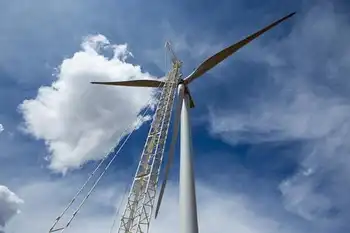Ireland exiting peat power, faces hurdles
Production of peat, partially decayed plant matter which is also used in gardening and often called turf, has long been a traditional feature of the boggy Irish countryside, making the country one of the top industrial producers along with Finland.
State-owned company Bord Na Mona, the only industrial-scale producer in Ireland, is not planning to open any new bogs however as it shifts its profile to renewable energy sources, and existing bogs will run out in about two decades.
"It's an important part of our history," Bord Na Mona Finance Director Michael Barry said in an interview. "It's not the cleanest fuel."
Bord Na Mona, which operates a 128 MW peat-fired power plant in Edenderry, west of Dublin, is increasingly focusing on renewable sources of energy such as wind and biomass as it phases out peat.
"We have one of the best wind regimes in Europe, the wind blows a lot here," Barry said. "One of the key obstacles is to do with the electricity grid and the resilience and ability of the grid to absorb new wind energy."
The best wind farm locations are often in remote areas where the grid is especially underdeveloped, he added.
Getting financing is also a limiting factor for many would-be wind farm owners, especially smaller players, Barry said.
"The credit conditions are difficult," he said. "The focus on banking is on shorter-term financing, they are maxing out at three years typically."
Bord Na Mona, which is 95 percent owned by the state and 5 percent by employees, but whose debt is not guaranteed by the state, has recently raised $205 million through a private placement, with average maturities of eight years, to help fund its move into renewables.
Wave energy in Ireland has also got a boost from several deals in recent weeks but Barry said wave and tidal would not be in focus for Bord Na Mona.
"Within the timeframe of 2009-2020 wave and tidal are not going to really deal with this issue, wind is hugely important," he said.
Ireland, which has few domestic fossil fuel sources, has a target to source 40 percent of the country's electricity from renewable sources by 2020, which Barry said would be challenging."
"The electricity grid is the key limiting factor," he said.
Related News

Worker injured after GE turbine collapse
WASHINGTON - A GE turbine collapsed at a wind farm in north-east Brazil, injuring a worker and sparking a probe into the fifth such incident this year, the manufacturer confirmed.
One of the manufacturer’s GE 2.72-116 turbines collapsed at Omega Energia’s Delta VI project in Maranhão, which was commissioned in 2018.
Three GE employees were on site at the time of the collapse on Tuesday (3 September), the US manufacturer confirmed.
One worker was injured and is currently receiving medical treatment, GE added.
"We are working to determine the root cause of this incident and to provide proper support as needed," it said
The turbine collapse in Brazil is…




